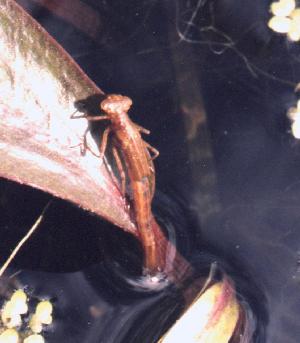
Damselflies lay their eggs in summer. Most here overwinter as eggs, then hatch and grow as fast as they can in the spring. Then the nymph must pull itself free of the water's tug.
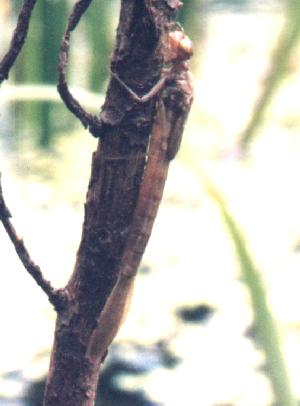
It must then climb up a rush or branch where its outer skin can dry out.
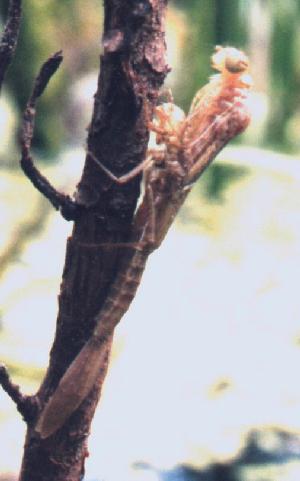
After a few minutes drying in the sun, its outer skin splits open at the head, and the adult damselfly strains to pull itself out of its old skin.
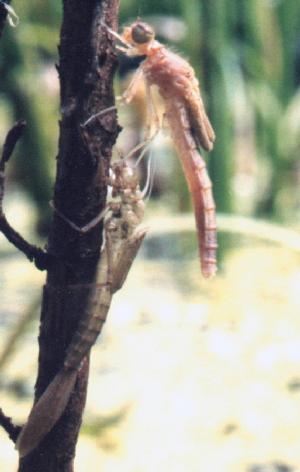
Free at last! First, its new legs must harden and gain sufficient strength to hold on to the branch.
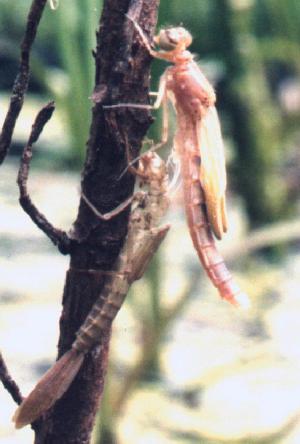
Then, its wings slowly expand, pumped open by fluid from its abdomen.
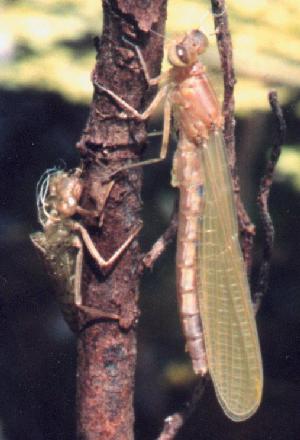
Now identifiable as a male Enallagma ebrium, its wings are fully extended, but still far too soft to fly.
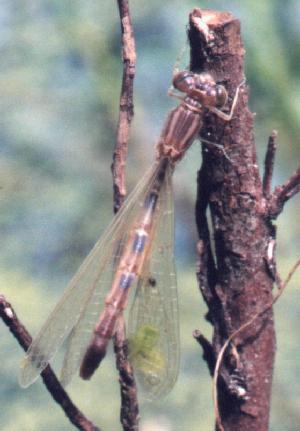
Then - tragedy. A gust of wind caught it before its legs were strong enough to hold it securely. Its wings were too soft to fly, and it blew down into the duckweed-covered water. Struggling gamely, it climbed back up its branch. But, too much damage had been done to its wings - they dried too crooked to ever fly, and two were glued together along with a piece of duckweed.
But, the next day, more damselflies were emerging. Life continues.